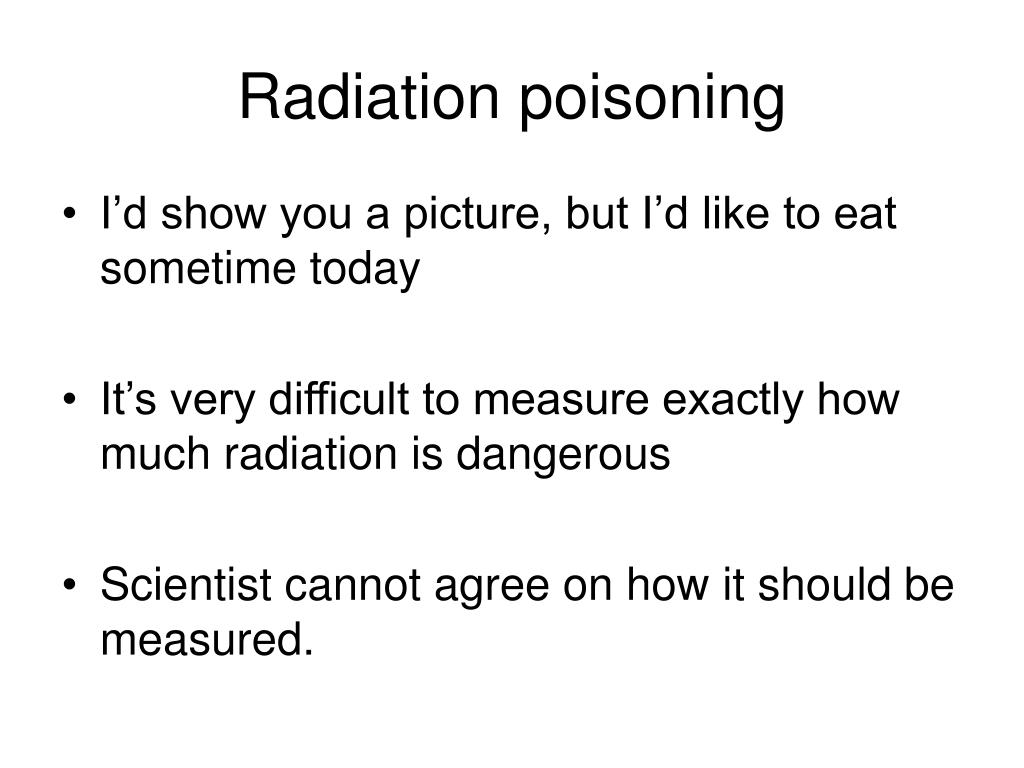
Each isotope of radium releases radiation at its own rate. It is this release of radiation that causes concern about the safety of radium and all other radioactive substances. Some of the radiation from radium is constantly being released into the environment. These levels are not expected to change with time. This would be about one part of radium in one trillion (1,000,000,000,000) parts of soil or rock. For example, a typical amount might be one picogram of radium per gram of soil or rock. Radium has been found at very low levels in soil, water, rocks, coal, plants, and food. It is formed when uranium and thorium (two other natural radioactive substances) decay (break down) in the environment. Radium is a naturally-occurring silvery white radioactive metal that can exist in several forms called isotopes.
#Radium poisoning symptoms skin#
These factors include the dose (how much), the duration (how long), the route or pathway by which you are exposed (breathing, eating, drinking, or skin contact), the other chemicals to which you are exposed, and your individual characteristics such as age, sex, nutritional status, family traits, life style, and state of health. If you are exposed to a hazardous substance such as radium, several factors will determine whether harmful health effects will occur and what the type and severity of those health effects will be. Exposure can also occur by being near radioactive chemicals at concentrations that are found at hazardous waste sites or industrial accidents. You may be exposed to it in the environment by breathing, eating, or drinking substances containing the radioactive chemical or from skin contact with it. You can be exposed to a radioactive chemical when you come into contact with that chemical alone or with a substance that contains it. This emission, which is also called a release, does not always lead to exposure. When a radioactive chemical is released from a large area, such as an industrial plant, or from a container, such as a drum or bottle, it enters the environment as a radioactive chemical emission. The information is important for you because radium may cause harmful health effects and because these sites are potential or actual sources of human exposure to radium. As EPA evaluates more sites, the number of sites at which radium is found above background levels may change.

However, we do not know how many of the 1,177 NPL sites have been evaluated for radium. Radium has been found above background levels at 18 of these sites. The Environmental Protection Agency (EPA) has identified 1,177 sites on its National Priorities List (NPL). This Statement was prepared to give you information about radium and to emphasize the human health effects that may result from exposure to it. For more information, call the ATSDR Information Center at 1-80. The effects of exposure to any hazardous substance depend on the dose, the duration, how you are exposed, personal traits and habits, and whether other chemicals are present. This information is important because this substance may harm you. A shorter version, the ToxFAQs™, is also available. Statements about hazardous substances and their health effects. This Public Health Statement is the summary chapter from the Toxicological Profile for radium. What recommendations has the federal government made to protect human health?.Is there a medical test to determine whether I have been exposed to radium?.What levels of exposure have resulted in harmful health effects?.

How can radium enter and leave my body?.


 0 kommentar(er)
0 kommentar(er)
